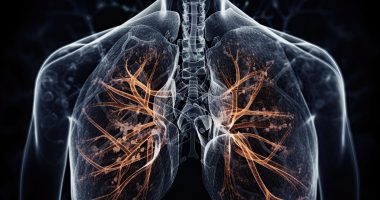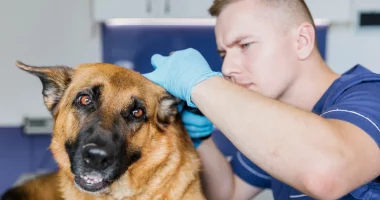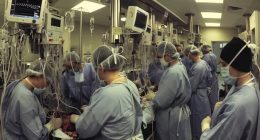A breast lump is a small, raised area or bump in the breast that textures differently from the surrounding tissue or the same area on the other breast. These lumps can happen for various reasons.
They might be caused by infections, injuries, fibroadenomas (non-cancerous tumors), cysts (fluid-filled sacs), fat necrosis (changes in fatty tissue), or fibrocystic changes in breast tissue. While breast lumps can occur in both men and women, they’re more common in women. Most lumps are not cancerous, but some can be.
Even though understanding the characteristics of a lump can provide clues about whether it might be cancerous, it’s important for anyone who notices an unusual breast lump to seek medical advice. Some benign lumps may still require treatment, and breast cancer doesn’t show the same signs in everyone.
Causes
The female breast is composed of various kinds of tissue, primarily milk glands responsible for milk production and milk ducts that transport milk to the nipple. Additionally, the breast contains blood vessels, fibrous connective tissue, nerves, fatty tissue, and lymph nodes, each contributing to its structure and function.
The composition of breast tissue can fluctuate based on physiological changes. For instance, during chestfeeding or breastfeeding, the breasts undergo noticeable changes in texture and appearance. These variations can also occur throughout the menstrual cycle due to hormonal influences.
These different components of the breast can react differently to changes in the body’s chemistry, influencing how breast tissue feels and appears and potentially leading to the growth of breast lumps.
Breast lumps can arise from various causes, including cysts, fibroadenomas, abscesses (indicating infection like mastitis), fat necrosis, intraductal papillomas, breast cancer, lipomas, and in males, gynecomastia, which involves inflammation in breast tissue. Some lumps may have defined borders, while others might experience a thickened area of tissue. Additionally, nipple discharge may accompany certain types of breast lumps.
Types and Symptoms
Noncancerous lumps
Noncancerous lumps can differ greatly in feel, size, and texture, which helps healthcare providers determine their nature.
Breast cysts
Breast cysts are fluid-filled sacs that are benign and typically affect women aged 30 to 50 years, becoming uncommon after menopause. They may not cause any symptoms, but some people may experience a rubbery, smooth lump, pain, or nipple discharge. Hormonal changes associated with menstruation are thought to contribute to their development. Treatment often involves aspiration, a procedure to drain the cyst, though complex cysts may require surgical removal if they recur and are connected to primary breast cancer.
Abscesses
These are often noncancerous and can develop during chestfeeding due to bacterial infections like mastitis. Symptoms include a lump, pain, swelling, redness, heat around the affected area, nipple discharge, nausea, vomiting, fever, and swollen lymph glands. Treatment typically includes abscess draining, antibiotics to fight infection, and pain relievers like ibuprofen. If an abscess happens outside of breastfeeding, further tests may be needed to eliminate breast cancer.
Fibroadenoma
Fibroadenomas are benign tumors of glandular tissue that are round, solid, and painless, commonly found in young women but can develop at any age. They frequently shrink in time but may be removed surgically if large or cause discomfort.
Intraductal papillomas
These are growths that look like warts in breast ducts, usually forming beneath the nipple and sometimes causing bloody or clear discharge. Surgical removal is common, with tissue testing to eliminate cancerous growths.
Fat necrosis
Fat necrosis occurs when fatty breast tissue undergoes damage due to trauma, surgery, or medical treatments, resulting in lumps or changes in breast shape. It may cause pain and typically manifests as oil cysts surrounded by solid tissue.
Lipoma
Lipomas are non-cancerous fatty tumors that are movable, soft, and painless, occurring at any place on the body, involving the breast.
Cancerous lumps
Cancerous breast lumps, unlike noncancerous ones, require prompt medical attention. Symptoms include lumps, swelling, skin changes like dimpling or irritation, nipple abnormalities, pain, and discharge, which contain blood. Regular screening helps in early detection when symptoms may not be noticeable. Seeking medical advice for any changes in the breast is crucial to promptly address concerns and ensure proper diagnosis and treatment.
Diagnosis
When someone goes to the doctor about a breast lump, they might have several tests to find out what’s going on:
- Physical examination: The healthcare provider checks the breast and the lump to feel its size and texture.
- Mammogram: This is an X-ray of the breast that helps healthcare providers see inside for any signs of abnormality.
- Breast ultrasound scan: This uses sound waves to create a picture of the breast tissue and can show whether the lump is solid or filled with fluid.
- Breast biopsy: This involves taking a small sample of the lump to check for cancer cells under a microscope.
- CT or MRI scan: These scans are used to look for any changes in other parts of the body to see if cancer has spread.
These tests help doctors understand what the lump might be and whether it needs further treatment.
When to consult a healthcare provider
Knowing when to see a healthcare provider about breast changes is important for early detection and peace of mind.
If you notice a lump in your breast or under your arm, changes in your nipple like discharge or inversion, or any dimpling or puckering in the skin, it’s advisable to schedule a medical consultation. These signs can sometimes indicate underlying issues that need attention.
The United States Preventive Services Task Force suggests that women start discussing breast monitoring with their healthcare provider from age 50, or earlier if they might have specific concerns about breast cancer risk. Some individuals may choose to begin screening from age 40 due to a family history of breast cancer or because they believe the benefits of early detection outweigh any potential risks. Making informed decisions with your healthcare provider can help tailor screening recommendations to your individual health needs and family history.
Treatment
Treatment for breast lumps varies depending on their nature, and not all lumps require immediate intervention, but they should always be checked by a healthcare provider.
For fibrous lumps or cysts, a healthcare provider might suggest monitoring without immediate action unless they cause discomfort or other issues.
Abscesses, typically caused by infection, may need to be drained using a fine needle and treated with antibiotics to clear the infection.
If breast cancer is diagnosed, medication typically includes a combination of therapies such as surgery to remove the tumor, chemotherapy to kill cancer cells, radiation therapy to target remaining cancer cells, and hormonal drug treatments to block hormones that may fuel cancer growth.
In cases where genetic testing reveals mutations in the BRCA1 gene or BRCA2 gene, which increase the risk of breast cancer. Additionally, family members with these genetic mutations may consider increased screening to detect cancer early if it occurs. Working closely with healthcare providers helps individuals make informed decisions about their treatment and follow-up care.
Summary
Breast lumps involve recognizing both noncancerous and cancerous causes. Noncancerous lumps like cysts, fibroadenomas, and abscesses can often be monitored or treated with drainage and antibiotics. Cancerous lumps require prompt medical attention and may involve surgery, chemotherapy, radiation therapy, and hormonal treatments.
Regular screenings are vital, especially for those with a family history or specific risk factors. Early detection through tests like mammograms and biopsies is crucial for effective treatment. Genetic testing for BRCA mutations can guide preventive measures. Consulting healthcare providers ensures personalized care and informed decisions regarding breast health.









